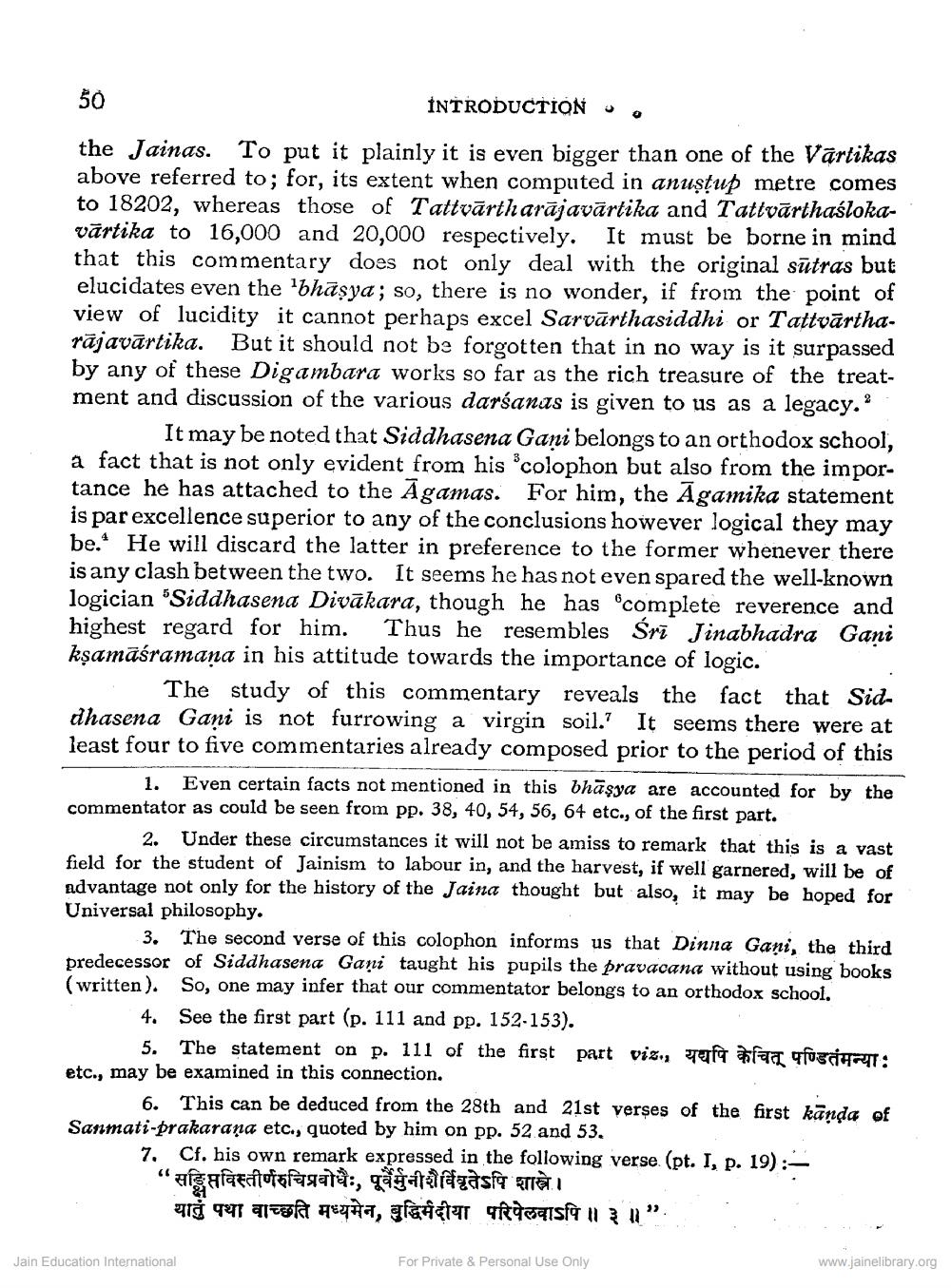________________
50
INTRODUCTION O.
the Jainas. To put it plainly it is even bigger than one of the Vārtikas above referred to; for, its extent when computed in anuştup metre comes to 18202, whereas those of Tattvārtharājavārtika and Tattvārthaílokavārtika to 16,000 and 20,000 respectively. It must be borne in mind that this commentary does not only deal with the original sūtras but elucidates even the 'bhāsya; so, there is no wonder, if from the point of view of lucidity it cannot perhaps excel Sarvārthasiddhi or Tattvārtharājavārtika. But it should not be forgotten that in no way is it surpassed by any of these Digambara works so far as the rich treasure of the treatment and discussion of the various darśanas is given to us as a legacy.
It may be noted that Siddhasena Gani belongs to an orthodox school, a fact that is not only evident from his colophon but also from the importance he has attached to the Āgamas. For him, the Āgamika statement is par excellence superior to any of the conclusions however logical they may be. He will discard the latter in preference to the former whenever there is any clash between the two. It seems he has not even spared the well-known logician "Siddhasena Divākara, though he has complete reverence and highest regard for him. Thus he resembles Sri Jinabhadra Gani ksamāśramana in his attitude towards the importance of logic.
The study of this commentary reveals the fact that Siddhasena Gani is not furrowing a virgin soil. It seems there were at least four to five commentaries already composed prior to the period of this
1. Even certain facts not mentioned in this bhāşya are accounted for by the commentator as could be seen from pp. 38, 40, 54, 56, 64 etc., of the first part.
2. Under these circumstances it will not be amiss to remark that this is a vast field for the student of Jainism to labour in, and the harvest, if well garnered, will be of advantage not only for the history of the Jaina thought but also, it may be hoped for Universal philosophy.
3. The second verse of this colophon informs us that Dinna Gani, the third predecessor of Siddhasena Gani taught his pupils the pravacana without using books (written). So, one may infer that our commentator belongs to an orthodox school.
4. See the first part (p. 111 and pp. 152-153).
5. The statement on p. 111 of the first part viz., para asfat qfogat: etc., may be examined in this connection.
6. This can be deduced from the 28th and 21st verses of the first kända of Sanmati-prakarana etc., quoted by him on pp. 52 and 53.
7. Cf. his own remark expressed in the following verse (pt. I, p. 19): – " सङ्किप्तविस्तीर्णरुचिप्रबोधैः, पूर्वैर्मुनीशैर्विवृतेऽपि शास्त्रे। यातुं पथा वाच्छति मध्यमेन, बुद्धिर्मदीया परिपेलवाऽपि ॥ ३ ॥"
www.jainelibrary.org
Jain Education International
For Private & Personal Use Only




